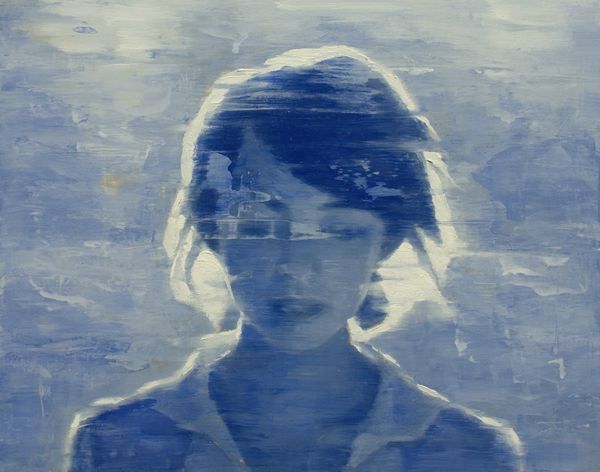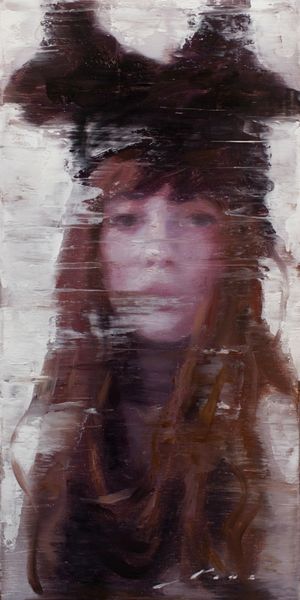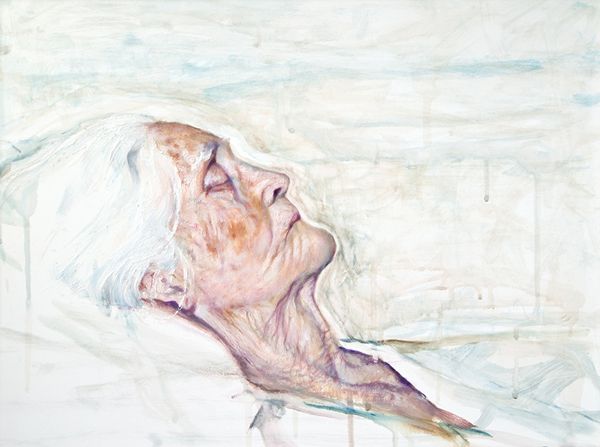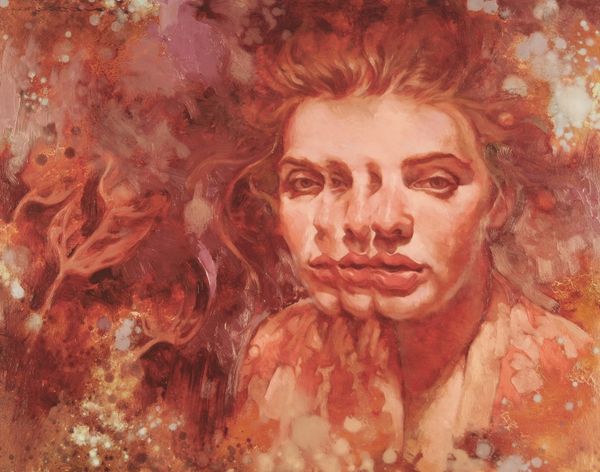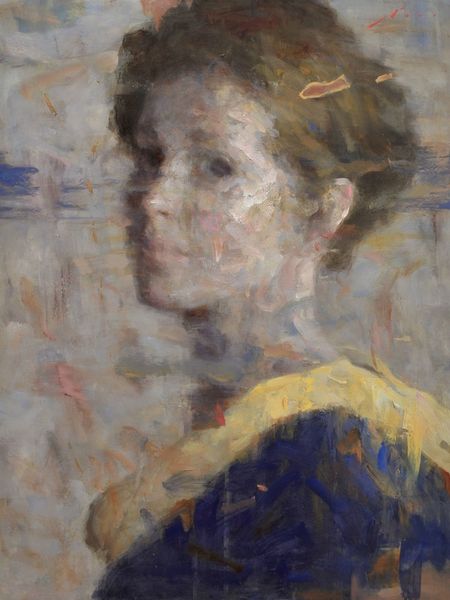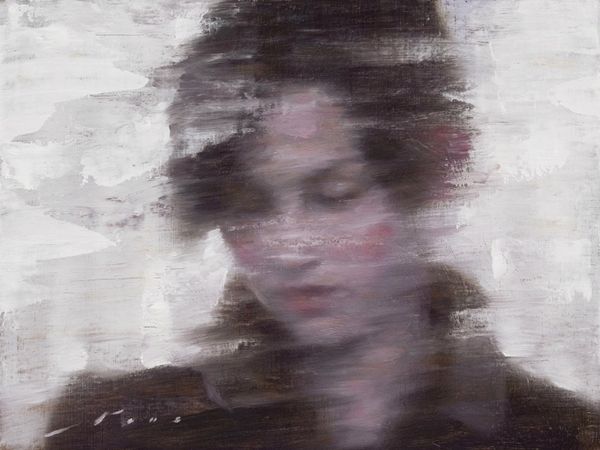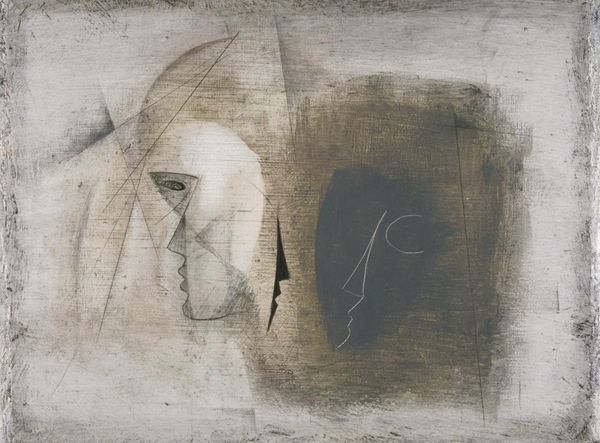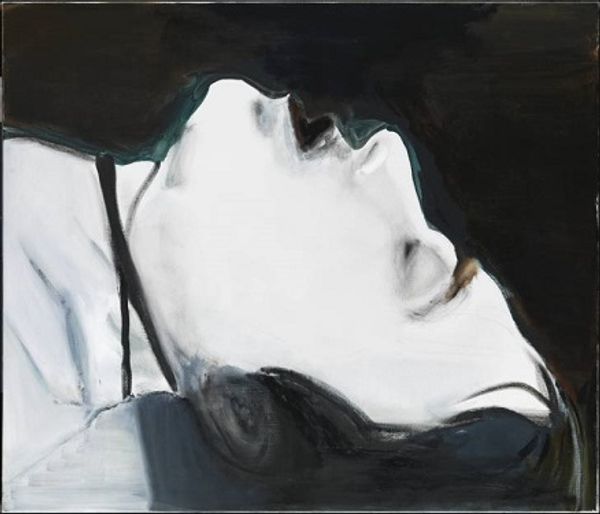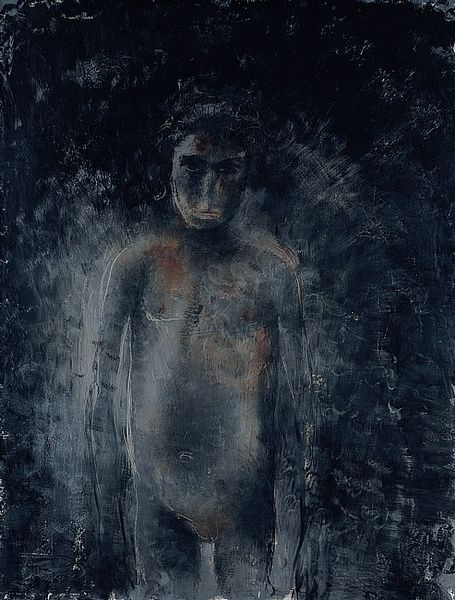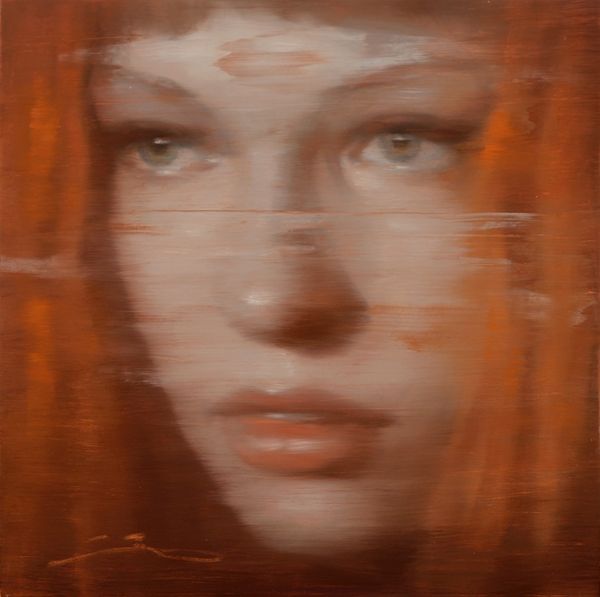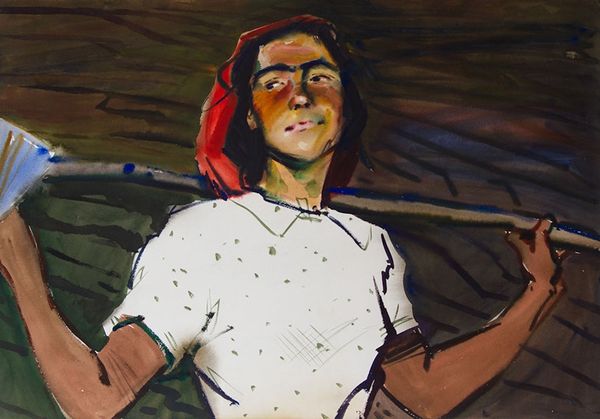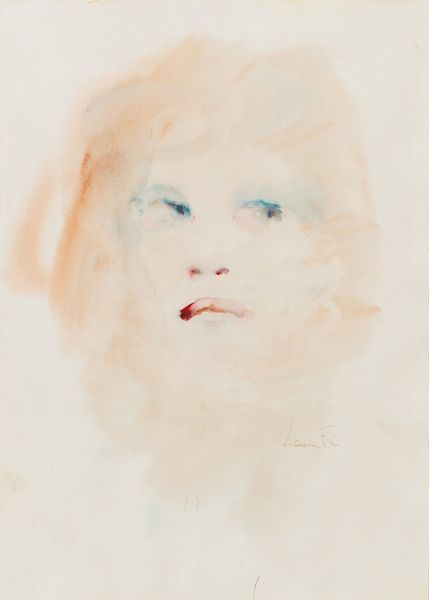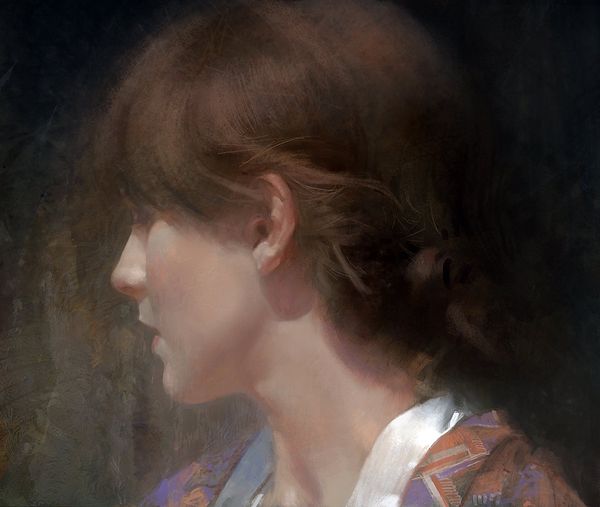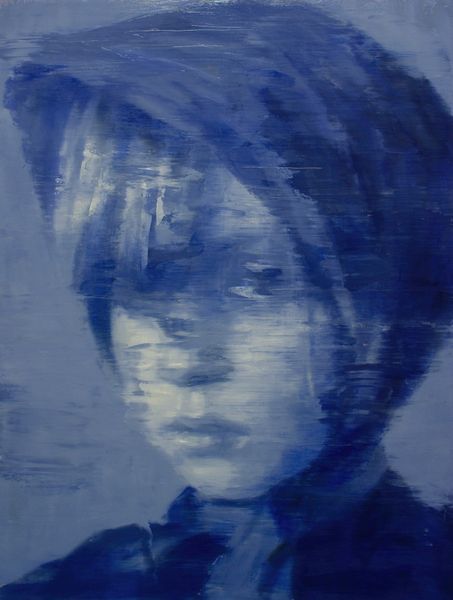
Dimensions: support: 1750 x 1752 x 28 mm
Copyright: © Gerhard Richter | CC-BY-NC-ND 4.0 DEED, Photo: Tate
Curator: Gerhard Richter, born in 1932, painted this haunting piece, "Brigid Polk (305)". Editor: The overall effect is spectral; the figure emerges from a grey fog, almost as a memory. Curator: Indeed, it reflects Richter's explorations of representation and memory, particularly within the context of post-war Germany and the blurry lines between personal and collective histories. Editor: The limited palette, dominated by shades of grey, evokes a sense of melancholy, perhaps mirroring the subject's inner world or a broader societal mood. Curator: Polk, known for her association with Warhol's Factory, occupies a liminal space here, her identity both present and obscured, inviting questions about visibility and agency. Editor: The softness of the rendering almost gives the work the quality of a photographic negative, evoking a kind of lost history or forgotten icon. Curator: It's a powerful comment on the elusiveness of truth and the complexities of portraying identity within shifting cultural narratives. Editor: It leaves you pondering the weight of visibility, of remembrance, and the stories embedded within a face.
Comments
tate 8 months ago
⋮
http://www.tate.org.uk/art/artworks/richter-brigid-polk-305-ar00344
Join the conversation
Join millions of artists and users on Artera today and experience the ultimate creative platform.
tate 8 months ago
⋮
Richter has always displayed the importance of the subjects of his paintings, maintaining that he simply chooses amateur photographs that allow him to concentrate on the act of painting appearances. But he is obviously drawn towards certain subjects since he pastes photographs of them in his ‘Atlas’, or personal image bank. Richter painted five portraits of Brigid Polk, the highly idiosyncratic and extrovert member of Andy Warhol’s Factory. These portraits are significant, in that in them Richter began to use colour again, after having used only black, white and grey tones in his previous figurative paintings. Gallery label, May 2011
